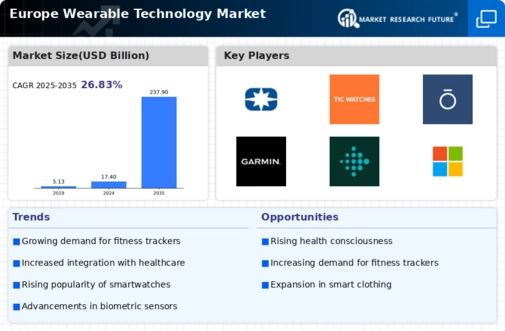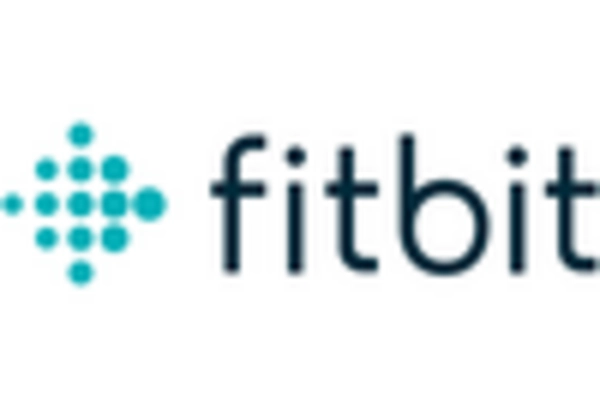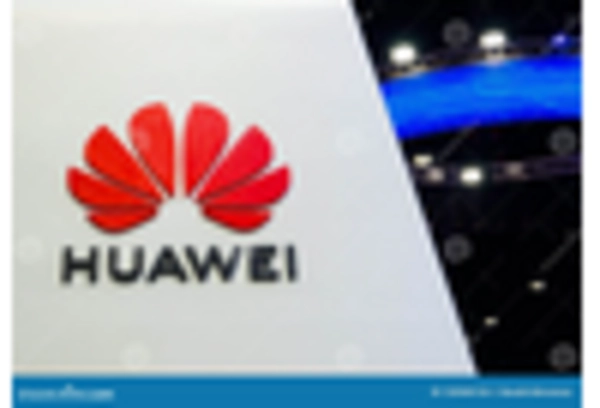Increased Adoption of IoT
The proliferation of the Internet of Things (IoT) is another critical driver for the wearable technology market in Europe. As more devices become interconnected, consumers are increasingly inclined to adopt wearables that can seamlessly integrate with their existing smart devices. This trend is supported by market data indicating that the number of connected devices in Europe is expected to reach 50 billion by 2026. Consequently, the demand for wearables that can communicate with other IoT devices is likely to rise, fostering innovation and competition within the wearable technology market. This interconnectedness may enhance user experience and drive further adoption.
Technological Advancements
Rapid advancements in technology are significantly influencing the wearable technology market in Europe. Innovations in sensors, battery life, and connectivity options are enabling the development of more sophisticated devices. For instance, the integration of artificial intelligence and machine learning into wearables is enhancing their functionality, allowing for personalized health insights. Market data suggests that the smartwatches segment is expected to account for over 40% of the total wearable technology market share by 2026, driven by these technological improvements. As a result, consumers are likely to adopt these devices more readily, further propelling the growth of the wearable technology market.
Rising Health Consciousness
The increasing awareness of health and wellness among consumers in Europe appears to be a primary driver for the wearable technology market. As individuals become more health-conscious, they seek devices that can monitor vital signs, track fitness activities, and provide insights into their overall well-being. This trend is reflected in the market data, which indicates that the health and fitness segment of wearable technology is projected to grow at a CAGR of approximately 15% from 2025 to 2030. Consequently, manufacturers are focusing on developing advanced health monitoring features, which may enhance user engagement and drive sales in the wearable technology market.
Regulatory Support and Standards
Regulatory support and the establishment of standards for wearable technology are emerging as vital drivers in Europe. Governments and regulatory bodies are increasingly recognizing the potential of wearables in enhancing public health and safety. Initiatives aimed at creating clear guidelines for data privacy and device safety are likely to foster consumer trust and encourage adoption. Market data suggests that compliance with these regulations may lead to a 30% increase in consumer confidence in wearable devices by 2027. As a result, the regulatory landscape is expected to play a crucial role in shaping the future of the wearable technology market.
Growing Demand for Remote Health Monitoring
The demand for remote health monitoring solutions is surging in Europe, particularly among the aging population. As healthcare systems evolve, there is a growing need for devices that can facilitate remote patient monitoring, enabling healthcare providers to track patients' health metrics from a distance. Market data indicates that the telehealth segment, which includes wearable devices, is projected to grow by over 20% annually through 2028. This trend is likely to encourage investment in wearable technology that supports remote health monitoring, thereby expanding the market and improving healthcare outcomes for patients.

















Leave a Comment